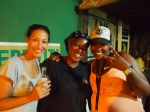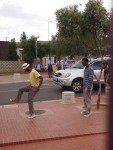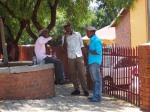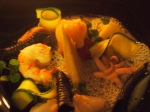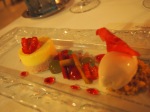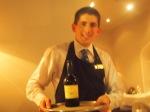OK I realise it’s been a long time between posts, put it down to lack of adequate net access coupled with an extended bout of holiday laziness. The longer it went on the harder it was to just ‘do’. So the next few posts may be random and out of any particular order. But for today, I’ve decided to start back with Soweto…
Soweto is a place that’s pretty much synonymous with the Apartheid struggle in South Africa, the Soweto uprising was there and it is the birthplace of the ANC. It’s where the students rose up against the powers that were and refused to be taught in Afrikaans – the language of the oppressor. They paid with blood for their uprising but they were the events that shone a light on their plight.
We stayed in Orlando West, Soweto, which is where notable ANC members – Nelson Mandela, Walter Sisulu and Bishop Desmond Tutu (along with many others) all lived.
When we mentioned to my friends and family in South Africa we were staying in Soweto, we were met with warnings and pleas to ‘be careful’. But the truth is we felt safer there than many other places in South Africa. There were no high fences, no begging, no feeling of insecurity – everyone was relaxed. Of course, one must be careful everywhere, but Orlando West is very safe and very welcoming for tourists. There are loads of B&Bs and a few great restaurants, as well as the Nelson Mandela museum (his old house converted) and the Hector Peterson museum (the youngest person to be shot by police during the student uprising against Afrikaans). We even got to go inside Walter Sisulu’s house, which is well and truly off the tourist map, and that’s because we dared to walk around the streets and chat to people – and one of those people happened to be a relative of Walter’s who showed us around.

Famous image by Sam Nzima of Hector Pieterson just after he was shot by South African police who opened fire on unarmed protestors in 1976. The photo spread through global news networks and became a symbol of the brutality of Apartheid.
The Soweto we saw was welcoming and vibrant – a far cry from it’s dangerous past. I only wish some of the people who talk about how dangerous townships are would take the time to challenge some of their beliefs. They’d be surprised. Or perhaps they don’t want to be?
- Drinking at a shebeen
- A couple of dancers on the street in Soweto
- Local life
The best thing about Soweto is being able to talk to the people who live there everyday and dispel the myths that surround it. Someone wise once said the truth will set us free…



